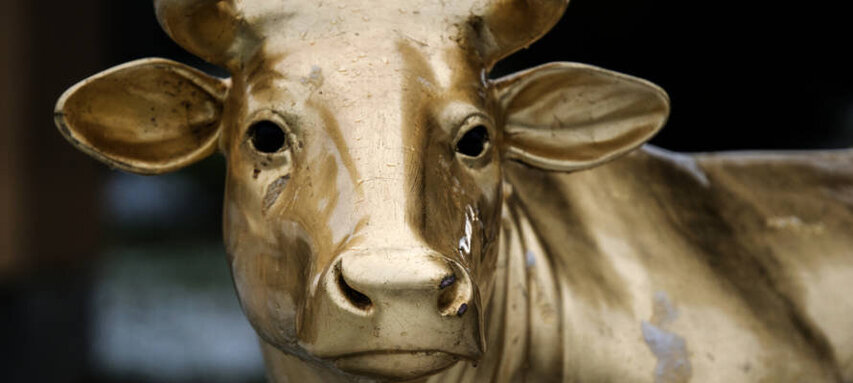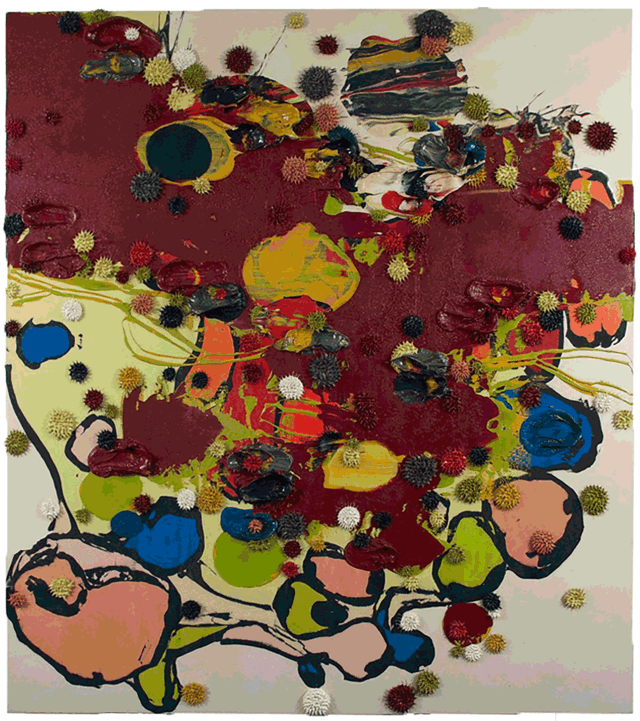July 4, 2022
Gathering Thoughts
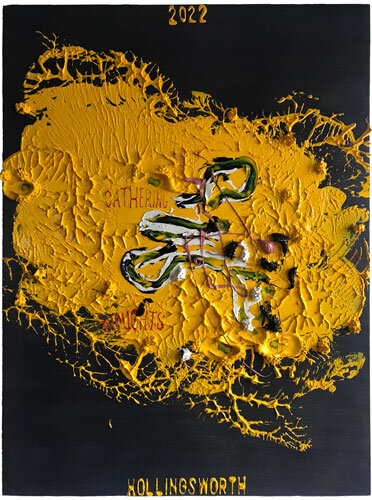
Gathering Thoughts
2022
#611
48" x36"
Oil on Canvas over Wood Panel
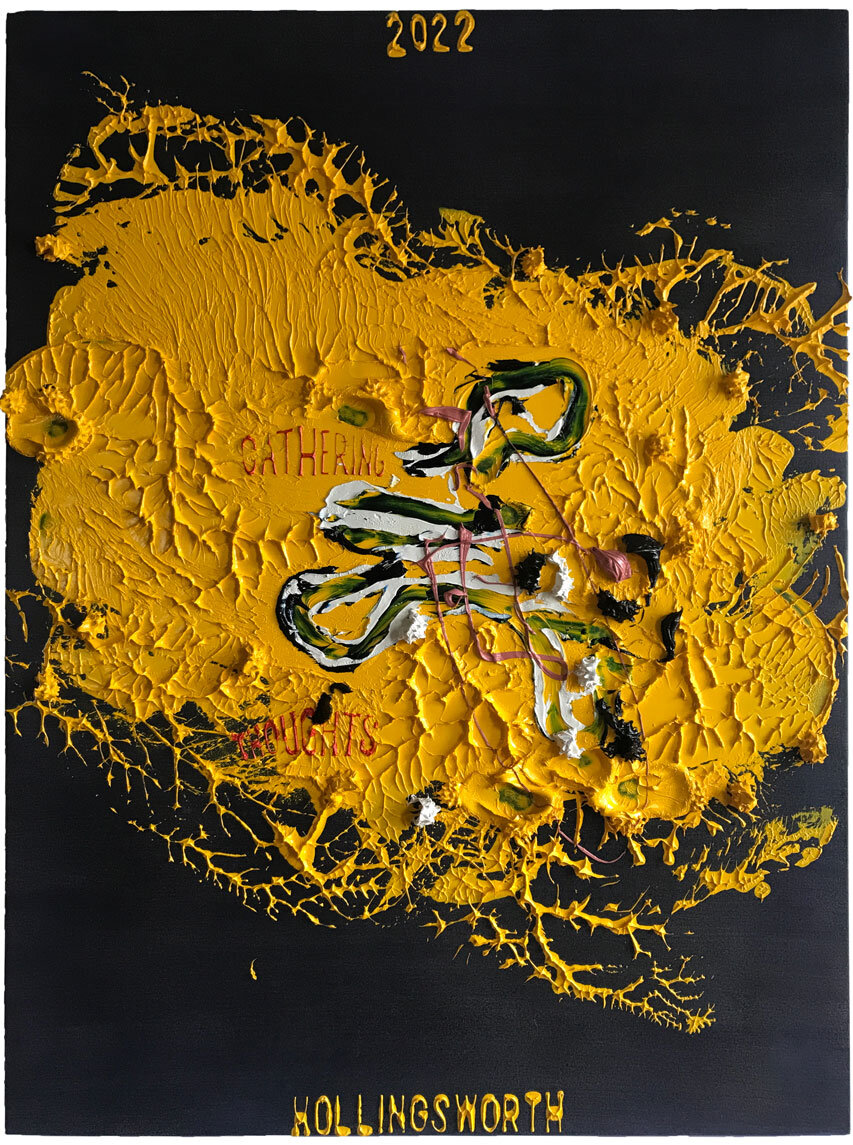
July 2, 2022
Price and Value
I have a dear friend who likes to send group emails that introduce topics current in the art dialog. The thing is, he sports a reductivist abstract style, so the word count in his emails after the subject line is in the single digits. This time, the content was a solitary hyperlink.
While I usually try to mirror his manner, I let rip this time:
Consensus of experts depends on the stability and strength of expertise. The dematerialization of art led to a dilation of the meaning of expertise. Art as a river of Modernity had developed from mountaintop mists to icy streams to crystal tributaries to rivers widening and ever muddying until where we are now: oozing, evaporating, steaming, fetid deltas disappearing into the ocean. In other words, consensus had lost its clout and the only hope lies in mountain dew.Once art became an asset class, art works became fungible. The system of aesthetic valuation, once natural and pegged to artist's agendas have become easily emulated, simulated and controllable. Artists' production became equivalent to minting currency. The value of art objects became fiat, whose worth depended on another kind of consensual decree by those who have figured out how to game the system.
What had underpinned the eclipsed legacy system were a community of artists who asked the question in the quiet of their studios: "...where are we in art history and where are we going?" What had underpinned the now-eclipsed legacy system of art were collectors who understood and believed in pricelessness.
The ironic nature of the value of art is lost in the collective mind of the contemporary art system. The value of commodities such as oil, water, lumber, steel is in what can be done with them. The value of art is in the art object itself, of its' own sake. Money, either in the form of printed paper or stacks of bullion is valuable only what can be done with it. Art is valuable for what it is. The former is expended, the latter is conserved. It's only when art in the possession of a collector, considered priceless in any degree, that it can begin to have a price. Yes, like death, all things priceless will be conquered in time. Eventually, a price can be quoted for the priceless possession. It is the incalculability of worth that renders a price that can be calculated. The world knows all of the superlatives that describe this dynamic: irreplaceable, incomparable, unparalleled, worth a king's ransom... the indices of the priceless. All of this is in the company of metaphysics, where the Real abuts the intangible.
There are no laws, no regulations, no policies that can remedy the problem of the reduction of art to mere currency or an alternative investment instrument, the problem of the evacuation of meaning in art. Only the return of passion can save the day. It's only when collectors join the sphere of creativity and imagination, when their collections are expressions imbued with vision and insight that can rival and put to the shade the shallow exploitation that the art world has become, that our art world can again shine.
Until then, it's all a sad shit show.
a world without a text
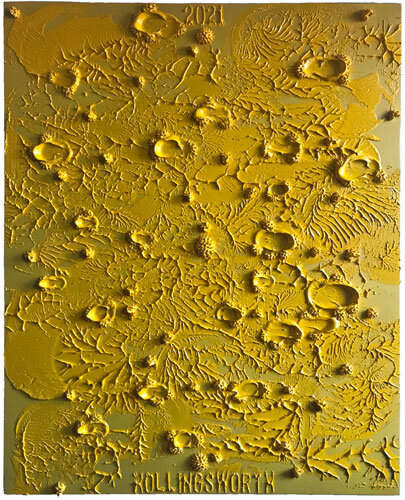
a world without a text
2021
#610
60" x 48", 152 x 122 cm
Oil on Canvas over Wood Panel
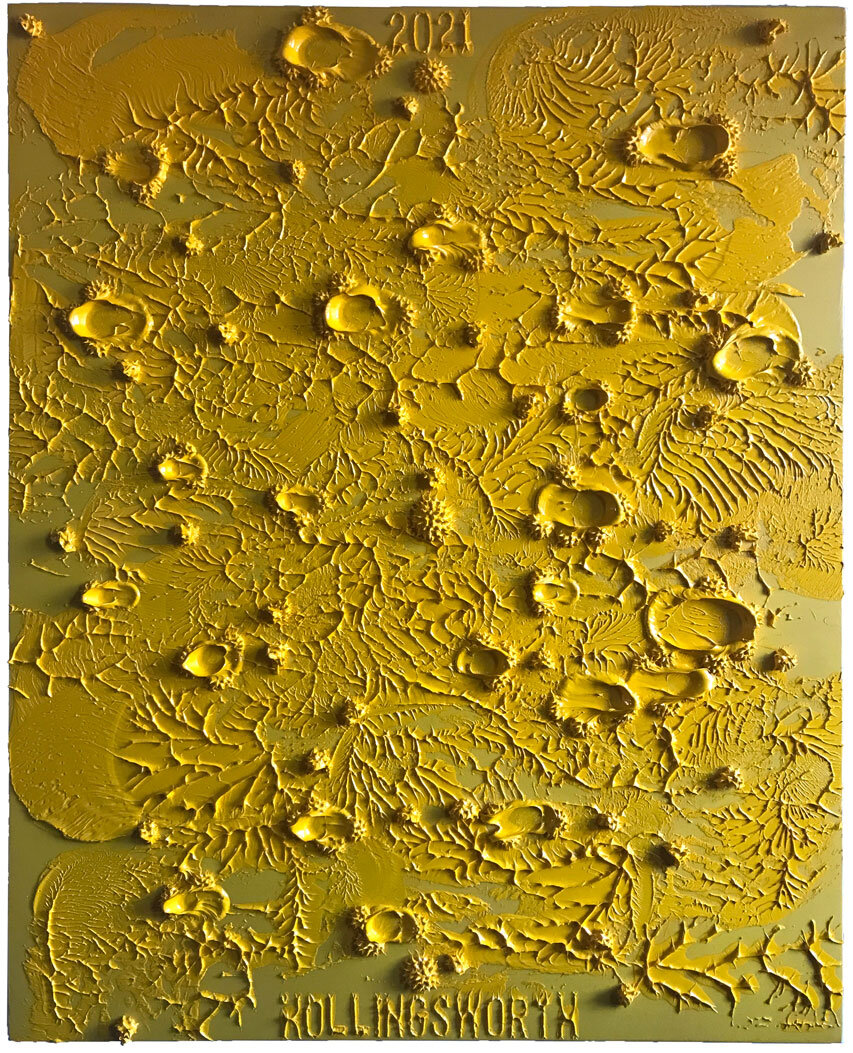
July 1, 2022
Breadcrumbs 2
About "Make Me Iliad":
I see abstraction and figuration as twin bearings of a shared continuum. So, I would prefer not to untangle them and to see one in relation to the other.
In a discourse that has long since exhausted today's art world, I left grad school during the "death of painting" debates. A proof of life was needed, I thought. I sought my own realization of an afterlife of painting in the specific material of impasto oil after a singular moment in the studio when I lifted a palette knife from a mass and marveled at how the surface tension spent itself out into a diminishing tendril of paint. I did it again, and again and so my first "monad" was created, a name borrowed from Leibniz's "atomic" individuals. Together with the monads, a few more instances of other paint forms together made enough of a vocabulary to encourage me to continue on to this day.
Given that abstraction is both a reduction of visuality and a multiplication of materiality... and that figuration is inescapable either by signaling or pareidolia, I remember thinking that when I place paint down on a canvas and scrape it up with a knife, it leaves a kind of print behind on the surface... that those resultant images could be related to forms above them with some planning... and that together they could both rain down from above or evaporate into clouds above.
Is there a person? I'm delighted that you would suggest this. Given enough time, all art objects tends towards dissolution, save the pyramids. The first to be lost to time is the artist's intentions. From my point to view, the greater an art object, the more it can contain the meanings projected from future generations. Yes, there is a bit of symmetry, a slight suggestion of eyes. Clearly, I did this. Clearly, I had intended the signal even at such small amplitudes. Eyes, yes, looking back, even a head, brains, thoughts swirling? I accept the figure of person!
As for the title, all paintings require titles of course. With vanishingly rare exceptions, I title all my works after I make them by combing through my weblog roughly during the period of its' making. Like a douser looking for water (aka "water witching"), the words will insist themselves into the title from the screen. This has never failed me. For every work that I complete, I post an image of it in the blog and include a hyperlink to the source page of the title. I trust that if I am so very lucky, someday a researcher would be interested enough to follow the trail of breadcrumbs that I have left behind in my online diary.
In the instance of "Make Me Iliad", I had blogged about liking the work of Mary Reid Kelly after seeing her show at Frieze. The title of her video was "You Make Me Iliad", I with fingers crossed, I hoped that eliminating "You" would be enough to make it mine while simultaneously pointing to her. The subject of her video was of the WWI, of soldiers, prostitutes and nurses... and I had been in the Navy when I was a lad, so there was some level of resonance there. Also, I love the Iliad.
I love how Homer balanced the heroic and tragic and how particularly wretched the latter was treated in his poem. In the physicality of my painting, I see a similar trembling fragility in how the forms of paint are formed and sheared, stomped, deformed. Life dances, flickers and all too soon it's over.
***
Notes:
I've had a couple of requests for an artist statement regarding paintings that I made several years ago. If you drill down into the third or fourth paragraphs of the blogpost Hyperlinked Apologetics, you can understand that this post is an object example of what I was saying there. Basically, I'm modeling what I hope that an interested public would do after I'm not around to perform the research myself.
Every work of art is in constant motion, either towards a museum or towards the land fill. If an artist is fortunate, a collector will provide sanctuary pieces of their oeuvre. This is a custodianship when an artwork is invested with enough value to survive multiple lifetimes. During the lifetime of a collector/custodian, the piece might be hung in a valued place in their home, a living room, a bedroom. Artworks compete for wall space. Living room, hallway, garage. Every art work must argue on its own for its survival after the artist passes away. These breadcrumbs are evidence for the courtroom.
Links:
Make Me Iliad
The originating blogpost documenting this painting into my inventory.
Frieze Keepsake
The source of the title. We can see how fragile the internet is for posterity, the Youtube link and the two other hyperlinks in the post no longer function.
The website of Mary Reid and Patrick Kelly
You Make Me Iliad, Art 21 in Youtube.
Breadcrumbs 1
As part of my practice, I reap the titles of my paintings from my weblog.
In the Spring of 2007, Leland de la Durantaye wrote an essay in Cabinet Magazine titled "BEING THERE, On the trail of Heidegger". I had linked to it in a September 19, 2007 blogpost, an insightful essay regarding the famously cryptic phenomenological philosopher. In the piece, he included Hannah Arendt's curious fable "Heidegger the Fox". As my eyes scanned the blogpost, I alighted on the passage "...so many fall into my trap; I have become the best of all foxes..."
Given that my understanding of Heidegger is always evolving, I appreciate that he is saying that Western Civilization is fundamentally myopic, overly given to instrumental reasoning, as de la Durantaye wrote. I understand this better now than in 2007, but my intuition seems firm throughout the years that the thought process that could declare painting dead is itself in a dead end. Therefore the way out of our particular cul de sac was a path outside, an avenue that was a focus on something like the being of painting.
In Arendt's fable, Heidegger "...built himself a trap as a den, pretended it was a normal den (not out of cunning but because he had always taken the traps of others for their dens). The trap was only big enough for him. Nobody could fall into his trap, because he was sitting in it himself..."
The stickiness of impasto paint is my trap, and it is a very cozy one indeed. The thing about wet into wet painting is that the sequence of one action into the next is not endlessly recombinant. Laying paint into a pattern, picking it up and laying it down again will not bring you back to the initial state anew. Like the entropic flow of time, each new condition is irreversible. Black line and color fill, once sliced up, reveals a printed image. A sweep of paint knifed flat in planes like weather systems from coast to coast, covering up the landscape. Scooping up the sheet of paint will not bring you back to the previous imagery. Paint comes out of the tubes in refined states. Paint laid down and picked up again complicates things in the direction from whence it came, from mud. There are only so many acts of mixing that can occur until the wall of dullness arrives. Even oil paint dries even though this can take some time, and when a skin begins to set, the ability to lick butter soft one color into the next becomes truncated. The clock is ticking. No do-overs allowed, the virgin canvas allows only one go. Entanglement, enmeshment, entrapment, a cozy den in all of this.
Once the major notes are established, punctuation. A Gulf Stream of paint swirls into eddies here and there, enforcing the constraints of pictorial law. With new tools, baby fisted balled up daubers made from rags, paint is stomped into flowers, letting color come up from the substrate into blooms here and there. Stiff paper peeled from the palette renders fractal patterns that can sweep across the canvas. Monads, hemispheres made of arrays of tendrils, rain across the landscape, pointing up color notes along the way. All of this muster collides one into the other within the limits of coherence, ensnared, entangled, enmeshed. Snug as a bug. A home worthy of the best of all foxes.
***
Notes:
I've had a couple of requests for an artist statement regarding paintings that I made several years ago. If you drill down into the third or fourth paragraphs of the blogpost Hyperlinked Apologetics, you can understand that this post is an object example of what I was saying there. Basically, I'm modeling what I hope that an interested public would do after I'm not around to perform the research myself.
Every work of art is in constant motion, either towards a museum or towards the land fill. If an artist is fortunate, a collector will provide sanctuary pieces of their oeuvre. This is a custodianship when an artwork is invested with enough value to survive multiple lifetimes. During the lifetime of a collector/custodian, the piece might be hung in a valued place in their home, a living room, a bedroom. Artworks compete for wall space. Living room, hallway, garage. Every art work must argue on its own for its survival after the artist passes away. These breadcrumbs are evidence for the courtroom.
Links:
Best of All Foxes
Here, you might notice that back in 2007, I hadn't yet employed the hyperlinked title strategy yet. Don't have the time at the moment to scroll through the archive to see when I started the practice, but I'll put the task in my to-do list.
It Was Kinda Like That
This post was about how "Best of All Foxes" put me through the paces.
Trapping Hey Digger
This is the source of the title for "Best of All Foxes".
BEING THERE, On the trail of Heidegger
This is the link to the article mentioned in my statement.
